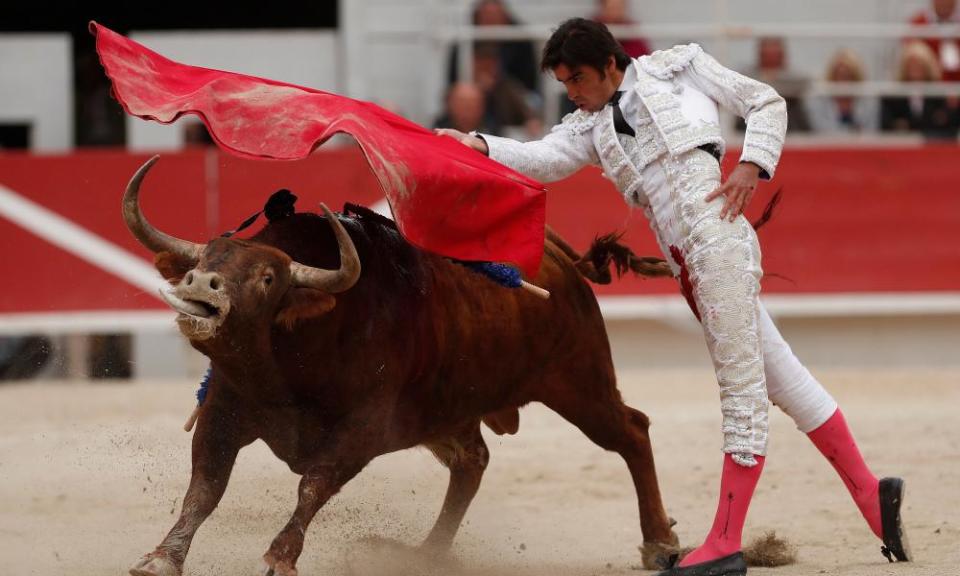Court rejects matador's bid to copyright his 'perfect kill'

The Spanish matador Miguel Ángel Perera was delighted by the manner in which he fought and dispatched a four-year-old, 539kg bull by the name of Curioso in June 2014.
But, despite being awarded both of Curioso’s ears for his performance in the bullring in the south-western city of Badajoz, Perera was keen for greater recognition of his work that day – namely that it be enshrined in copyright as a work of art.
If bullfighting was an art, his lawyers argued, then a bullfighter’s performance could be registered as an original artistic creation.
On Thursday, however, Spain’s supreme court rejected his request, ruling that a bullfighter’s work could not be registered as intellectual property on the grounds that it was hard to identify it as a concrete example of artistic creation.
The judges acknowledged that a bullfighter’s performance could excite crowds and critics – and indeed find itself immortalised by poets such as Federico García Lorca and artists such as Francisco de Goya and Pablo Picasso.
In their judgment, however, they pointed out that the European court of justice defined the concept of an artwork as an original object that constitutes an intellectual creation by its maker, and also said the consideration of such a work should be based on the elements that express that intellectual creation.
The supreme court said the intellectual or artistic creation needed to be expressed in a form in which it could be precisely and objectively identified, even if that form was not necessarily a permanent one.
“That identification isn’t possible with bullfighting because there is no way to objectively express what the bullfighter’s artistic creation consists of when they work the bull – apart from the emotion they elicit from those who witness it through the beauty of what happens in that dramatic context,” the judgment said.
The court contrasted bullfighting with choreography, noting that it was possible to precisely and objectively identify an original intellectual creation in the steps and movements of a dance work.
“The same thing does not happen with the performance of a bullfighter, in which, beyond the particular passes, moves and manoeuvres – over which exclusive ownership cannot be claimed – it is very difficult to objectively identify where the original artistic creation lies so as to allow the claim of an exclusive right to a work of intellectual property.”

 Yahoo Finance
Yahoo Finance 